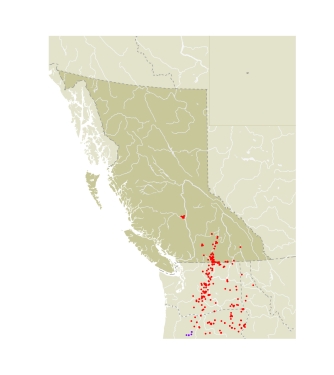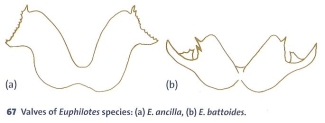The name Euphilotes is derived from the Greek prefix eu (true) and Philotes, the genus in which the butterflies were previously placed.
In this genus and the next, the eyes are smooth or with only a few hairs. Veins 7 and 8 of the forewing are joined at base. There are also genitalic differences. Euphilotes species are much smaller than Glaucopsyche, and feed on the plant genus Eriogonum. There are four Nearctic species in the genus Euphilotes.
Currently only one species is recorded for BC, E. battoides. A second species, E. enoptes (Boisduval, 1852), occurs very close to the BC border, in Okanogan County, WA. It is not possible to tell the two species apart by wing characters in our area. The critical part of the male genitalia is therefore shown in the figure to help identify the two species. There is also the remote possibility that a third species, E. ancilla (Barnes & McDunnough, 1918) with male genitalia identical to those of E. enoptes will be found in extreme southeastern BC.
|
|

